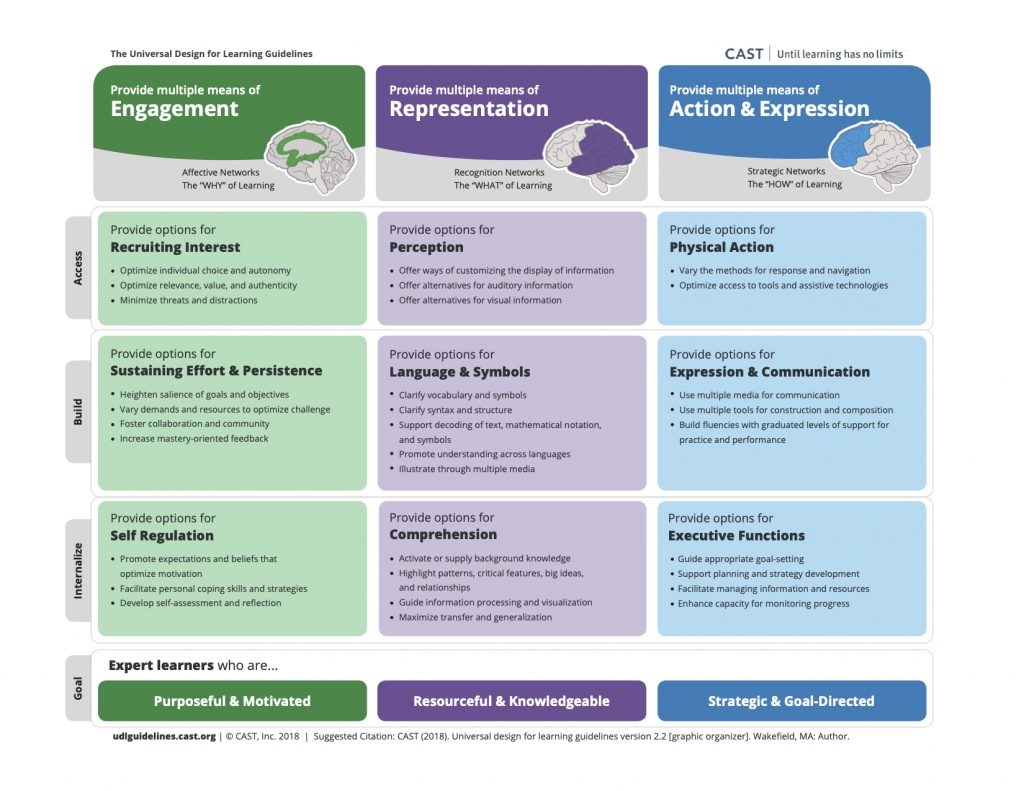Universal Design for Learning in Dual Modality Courses

Universal Design for Learning (UDL) is an inclusive approach to teaching and learning that offers all students equal opportunities to succeed in any classroom, regardless of the subject and course modality. While the term “universal” might lead to the assumption that UDL offers one all-encompassing approach to include all learners, it encourages the opposite (CAST, 2018). UDL emphasizes that every student has individual learning needs and that providing multiple learning approaches limits barriers to learning and can reach more students. Thus, it becomes necessary to think ahead of time about how to incorporate flexibility and options into a course that can be adjusted for every learner’s needs and requirements. Further, UDL cannot be mistaken for an approach that must only be utilized in the case of students with official accommodations. Instead, all learners and the instructor will benefit from UDL guidelines. Three primary principles of UDL can be outlined (CAST, 2018).
Click the titles in the interactive accordion to learn more about each aspect of UDL.
Explore the graphic below to learn specific strategies you can use to apply UDL to your instruction. Click the graphic to zoom in.

UDL guidelines should always be the standard for every course but they become especially important to remember when planning and teaching a Dual Modality course. You, as a Dual Modality instructor, are already a UDL Champion since you recognize the need for and benefits of offering multi-dimensional modalities. It is highly likely that you are already incorporating these UDL principles into your teaching. However, to support your Dual Modality journey and to help you keep UDL at the forefront of your course planning and teaching, additional UDL best practices and tips are outlined in this handbook.
